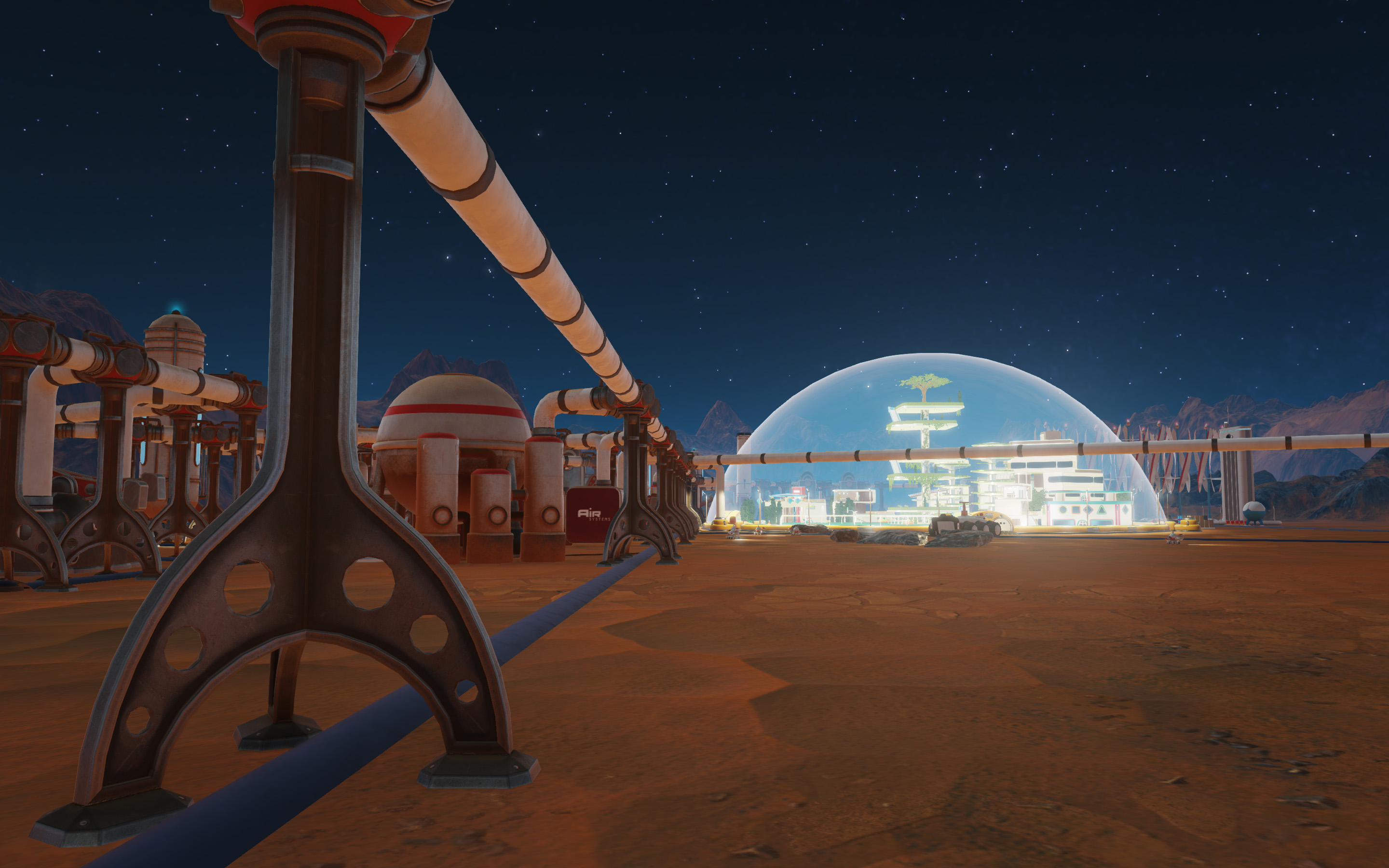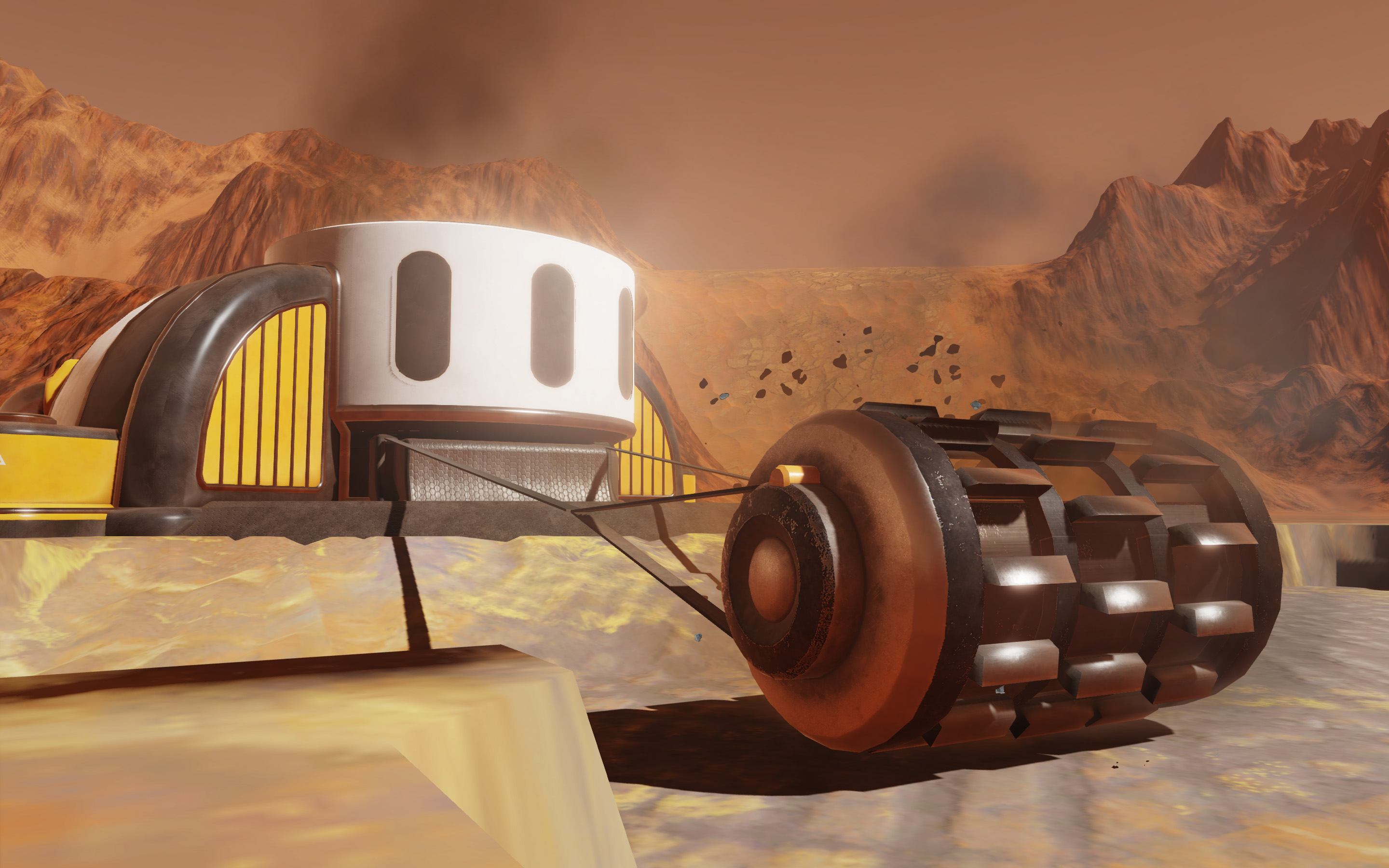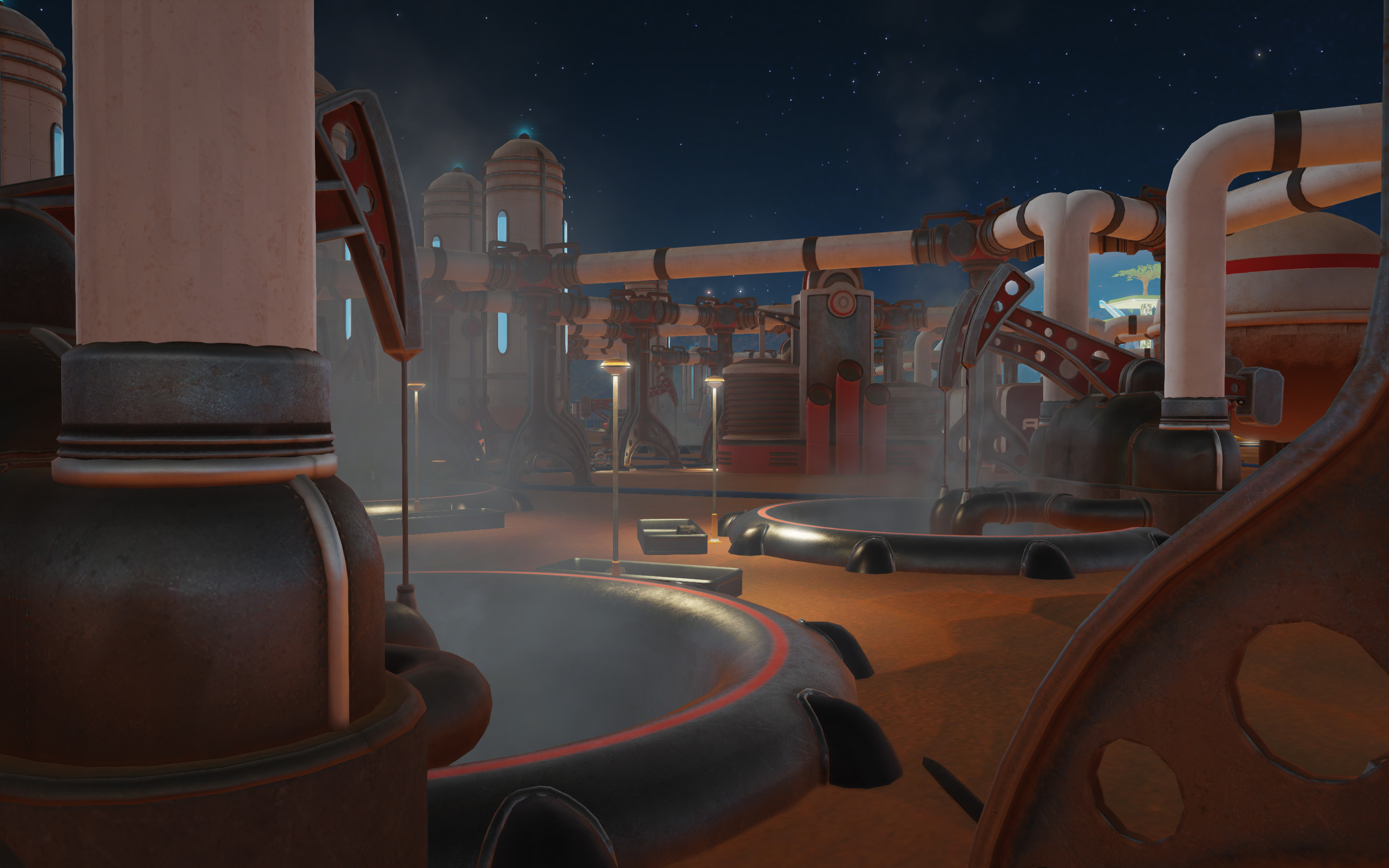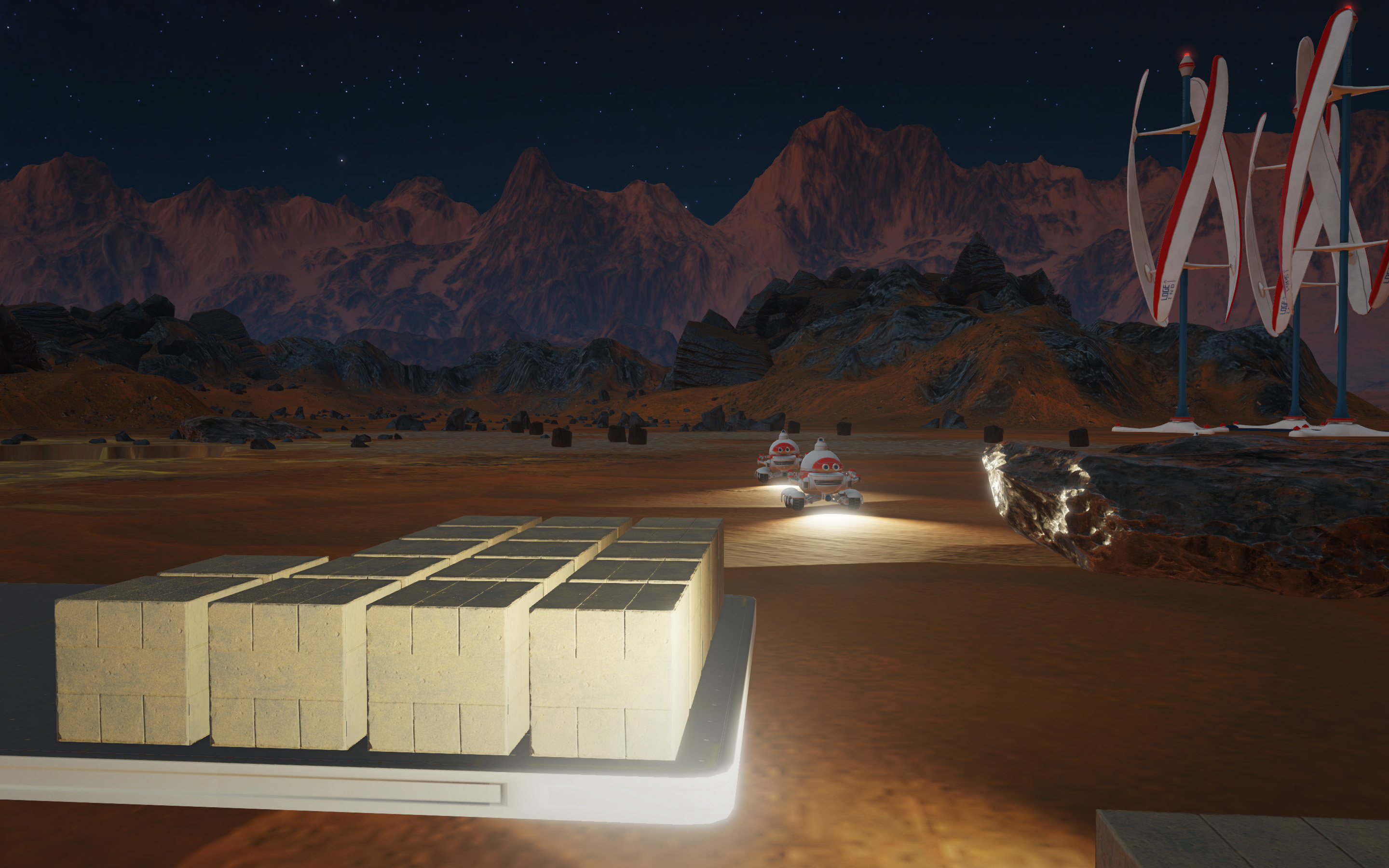An exclusive look at Surviving Mars' inventive, intricate resource system
Learn more about resources with this exclusive video.
In Surviving Mars, you're tasked with building a colony on the red planet, a gig that requires you to keep your colonists both alive and happy, while dealing with the perils of the surrounding environment. Resources are a huge consideration in any management game, and settling on Mars creates a bunch of headaches in this regard.
In the short video above, you'll learn a little more about resources and how they work in the game. Below, Boian Spasov, lead designer of Surviving Mars at former Tropico dev Haemimont Games, explains this system in more depth, and how you'll need more than money to keep your colony ticking along.
Can you talk about how resources work in Surviving Mars, and how that plays into the survival element of the game?
When we started working on Surviving Mars it quickly became apparent to us that a traditional city-builder resource system won't do at all. We put a concentrated effort to emphasise elements that are not common for the genre but are tightly tied to the survival aspect of the game, such as scanning for resources, deposit scarcity and transportation problems.
Our main objective was to create a rich, deep system where resources feel different from one another and are not just requirements for placing new buildings, but instead present different kinds of thematic problems. Your water towers may freeze. A metal deposit may run dry. A critical building may stop working because the electronics required to repair it is not available.
What are the different ways you can make money in the game? How do you gather resources?
First things first—on Mars money will not always solve your immediate problems. When a cable is faulty or a pipe leaks, you are not able to simply plug the hole with dollar bills.
The biggest gaming news, reviews and hardware deals
Keep up to date with the most important stories and the best deals, as picked by the PC Gamer team.
Your limited funding is kind of a wildcard, allowing you to order prefab buildings, vehicles and resources from Earth. Delivery takes time though, so these may arrive too late to be of any use and you still need to be able to secure fuel for the return trips of the rockets. Funding is also kinda hard to earn—you can get it by exporting precious metals but such deposits are few and far between as by some other, more exotic methods such as pampering a celebrity in your colony.

As for the other resources, there are quite a lot of them. Construction materials such as metals and concrete are required to expand your colony and for maintenance. They are usually gathered from deposits and these deposits will eventually run out.
Advanced resources such as Polymers and Electronics are produced in factories and will be required in large quantities for more advanced buildings. Initially you will not be able to make them in the colony and will have to rely on supplies from Earth for them. Resource self-sufficiency is a huge milestone that cannot be reached trivially in the early days of your colony.
Most of your buildings require electricity to operate, which is another kind of resource to manage. Life support resources such as Oxygen, Water and Food are critical for the survival of your colonists. Each of these systems may fail in a different way, so it is always prudent to keep emergency storages and to always have a backup plan.
How important is it to pick the right spot to build your base in Surviving Mars? What other factors do you have to be aware of at the start of the game?
Even as you are setting up the game, you will be faced with several choices very relevant to the resources that you will have available later on. Where on Mars you will land? Do you prefer a dangerous location rich in metal deposits, or a relatively safer location with secured water supply? What will you take in your first rocket? Will you add additional probes to the payload, allowing you to scan more sectors before you pick your landing site?
Picking your colony location is an involved process. The first step is to customise the mission parameters. Different mission sponsors and the chosen mission commander specialisation will make certain gameplay elements much easier or harder for you.

Then you will determine the initial payload of your rocket. You can go with the default or customise it picking any prefab buildings, starting resources and vehicles up to the rocket capacity and the limits of your funding.
Next, you have to select a rough colony location anywhere on Mars. This choice will determine the topology of the map you play on. Different maps may be rich or scarce on certain deposits and will offer various environmental challenges such as Dust Storms.
Finally, you will be able to scan a limited part of the map with Probes and will have to select an exact landing site. At this stage you have to take care to plan both for nearby deposits and potential expands at this stage—the map is vast and different positions offer different advantages and challenges.
At the start of the game you land drones before your colonists arrive. How does this phase of the game shape what happens next?
The early game stage, the so-called "automated colony" is one of my favorite elements in the game. You are basically putting down the foundation of a much larger project—establishing basic infrastructure, securing essential life support, testing your tech against the dangers of the red planet for the first time and making use of the limited resources that can be exploited at this stage. This stage feels both safer, since machines are more easily replaceable than humans and incredibly crucial, because planning mistakes at this point can have far-reaching consequences.
Also, the drone workers are cute. I just love the industrious little guys and I hope they will remember this if they decide to take over my colony at some point in the future.

Can you talk about exporting, and how you can use that to make more money?
If is fairly straightforward—you can load a rocket with precious metals (one of the few things that have significant value on Earth, but a more limited use on Mars), refuel it so it can return to Earth and you get a small funding boost. Extracting precious metals and producing fuel require separate infrastructure. Precious metal deposits are scarce and require colonist workers so you can't really get to them very early in the game. Fuel is highly explosive and its production will put a strain on your very limited water supply.
Still, even if you don't discover a rich deposit of rare metals, you can get to self-sufficiency with careful planning and prudent usage of your starting funds. As I said earlier, it is not a game about money. Funding is often less important than vital little things like oxygen and power that we take for granted on Earth.
How conscious do you have to be of factors outside of your control, like meteor storms?
Disasters are a thing in the game as much as you want them to be. You can pick a very safe map, or challenge yourself with a more aggressive location, braving seasonal Dust Storms and extreme Cold Waves. Each of these disasters offers a different set of challenges—for example a Dust Storm will reduce the effectiveness of your Solar Panels, making you rely on stored power and alternative energy sources. It will also clog your structures with fine dust, forcing you to perform maintenance more often, thus putting a strain on your limited resources.
I still remember one game in which a huge meteor landed right in the middle of my initial landing site, devastating all my vehicles. I am talking about a one-in-a-million chance here, something that hasn't yet happened in any other playtest that we've made. It is as if the piece of rock decided it will be jolly good fun to screw up my colony in particular. Still, I landed a second rocket some time later and eventually managed to salvage some materials from the ruined vehicles and recover—it was definitely a very memorable playthrough!



